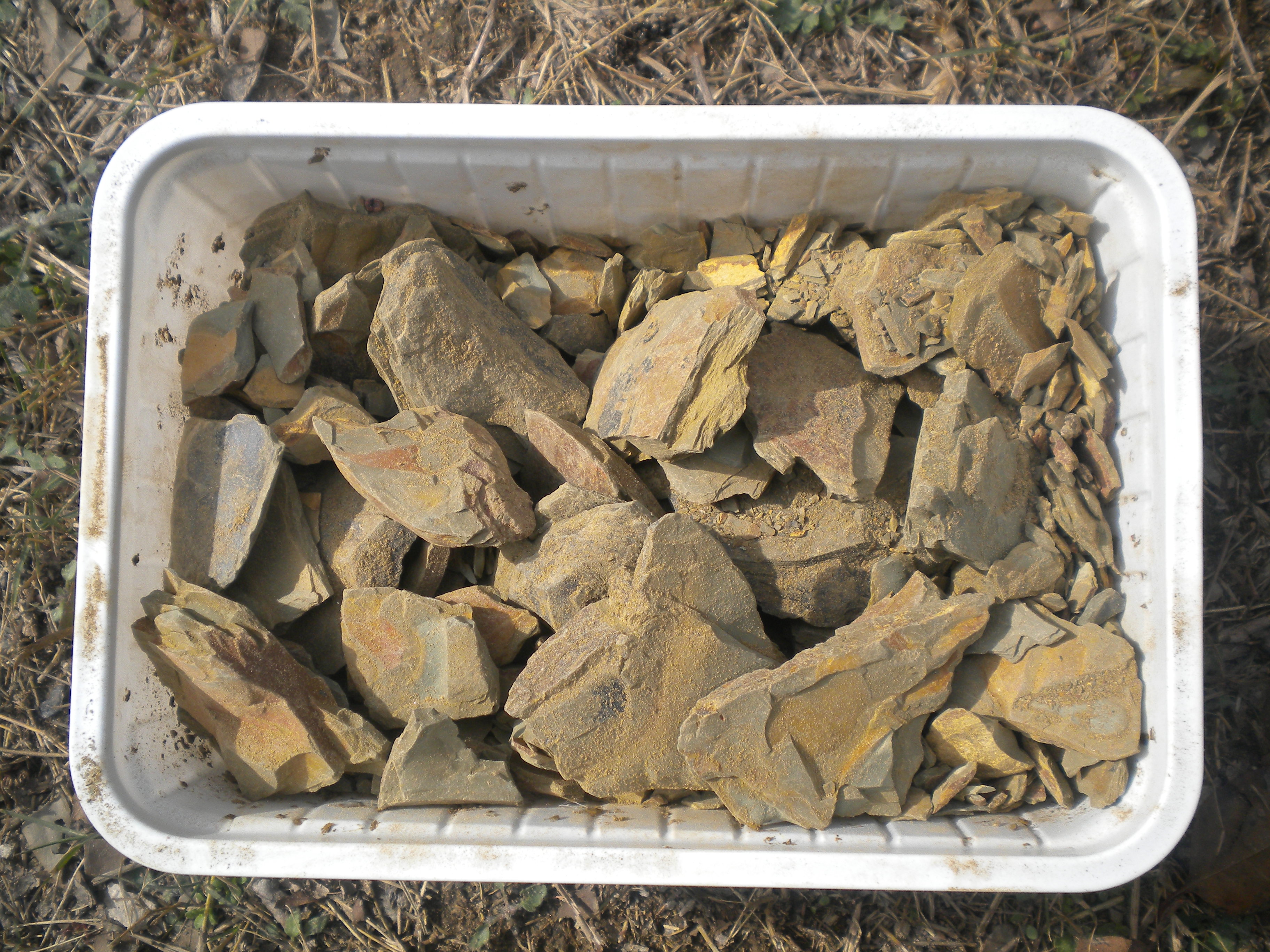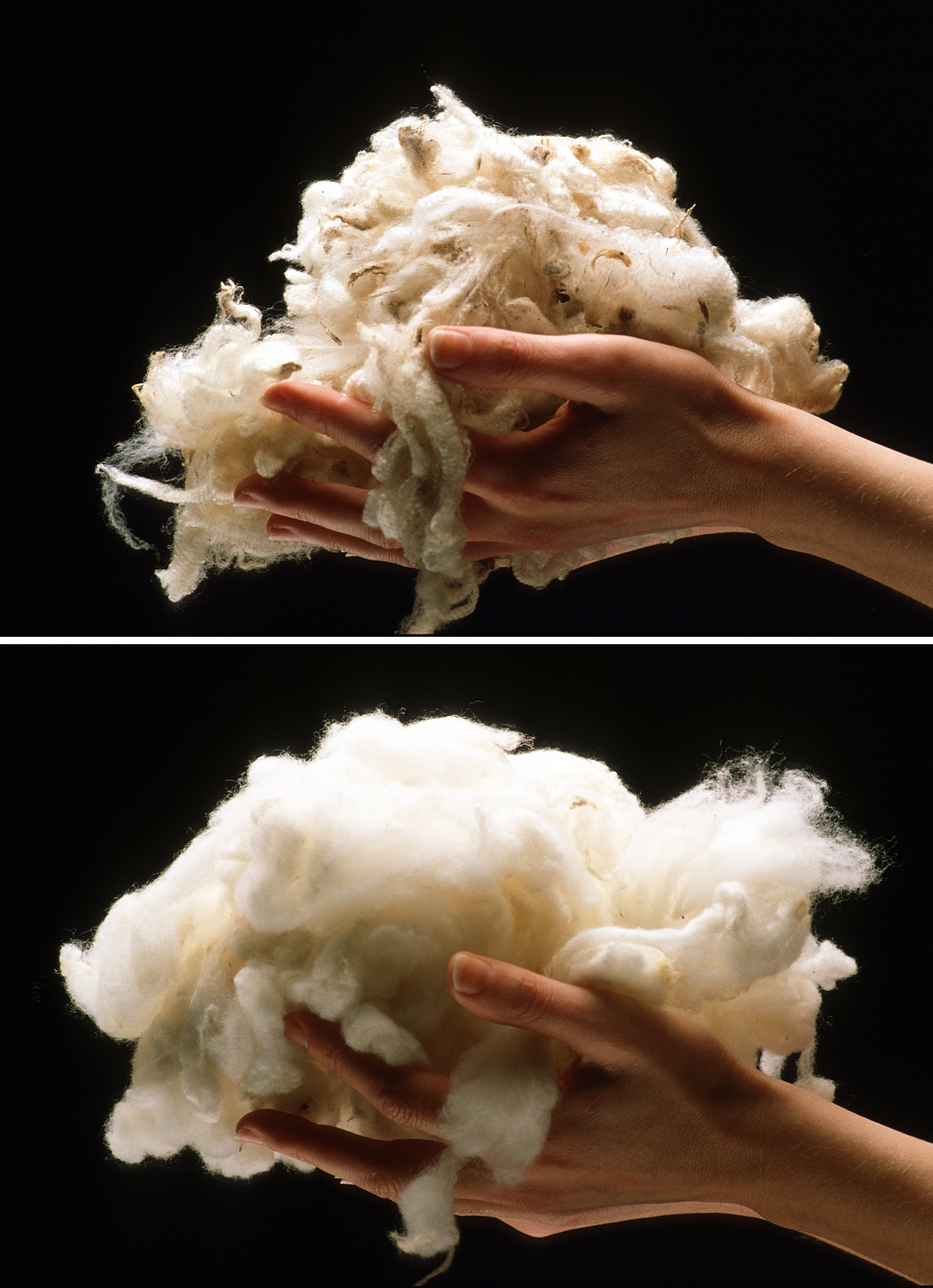|
Fulling
Fulling, also known as tucking or walking ( Scots: ''waukin'', hence often spelt waulking in Scottish English), is a step in woollen clothmaking which involves the cleansing of woven cloth (particularly wool) to eliminate ( lanolin) oils, dirt, and other impurities, and to make it shrink by friction and pressure. The work delivers a smooth, tightly finished fabric that is insulating and water-repellent. Well-known examples are duffel cloth, first produced in Flanders in the 14th century, and loden, produced in Austria from the 16th century on. Waulking could be done with the hands and feet. In medieval Europe, it was done in water-powered fulling mills. After the Industrial Revolution, coal and electric power were used. Felting refers more generally to the interlocking of loose wool fibers; they need not be spun and woven first. Process Fulling involves two processes: scouring (cleaning) and milling (thickening). Removing the oils encourages felting, and the cloth ... [...More Info...] [...Related Items...] OR: [Wikipedia] [Google] [Baidu] |
Fuller's Earth
Fuller's earth is a term for various clays used as an absorbent, filter, or bleaching agent. Products labeled fuller's earth typically consist of palygorskite (also known as attapulgite) or bentonite. Primary modern uses include as absorbents for oil, grease, and animal waste (cat litter), and as a carrier for pesticides and fertilizers. Minor uses include filtering, clarifying, and decolorizing; as an active and inactive ingredient in beauty products; and as a filler in paint, plaster, adhesives, and pharmaceuticals. It also has a number of uses in the film industry and on stage. Etymology The English name reflects the historical use of the material for fulling (cleaning and shrinking) wool, by textile workers known as ''fullers''. In past centuries, fullers kneaded fuller's earth and water into woollen cloth to absorb lanolin, oils, and other greasy impurities as part of the cloth finishing process. The original spelling was without an apostrophe, but the apostrophe be ... [...More Info...] [...Related Items...] OR: [Wikipedia] [Google] [Baidu] |
Watermill
A watermill or water mill is a mill that uses hydropower. It is a structure that uses a water wheel or water turbine to drive a mechanical process such as mill (grinding), milling (grinding), rolling, or hammering. Such processes are needed in the production of many material goods, including flour, lumber, paper, textiles, and many metal products. These watermills may comprise gristmills, sawmills, paper mills, textile mills, hammermills, trip hammering mills, rolling mills, and wire drawing mills. One major way to classify watermills is by wheel orientation (vertical or horizontal), one powered by a vertical waterwheel through a Gear train, gear mechanism, and the other equipped with a horizontal waterwheel without such a mechanism. The former type can be further subdivided, depending on where the water hits the wheel paddles, into undershot, overshot, breastshot and pitchback (backshot or reverse shot) waterwheel mills. Another way to classify water mills is by an essential tr ... [...More Info...] [...Related Items...] OR: [Wikipedia] [Google] [Baidu] |
Felting
Felt is a textile that is produced by matting, condensing, and pressing fibers together. Felt can be made of natural fibers such as wool or animal fur, or from synthetic fibers such as petroleum-based acrylic or acrylonitrile or wood pulp–based rayon. Blended fibers are also common. Natural fiber felt has special properties that allow it to be used for a wide variety of purposes. It is "fire-retardant and self-extinguishing; it dampens vibration and absorbs sound; and it can hold large amounts of fluid without feeling wet..." History Felt from wool is one of the oldest known textiles. Many cultures have legends about the origins of felt-making. Sumerian legend claims that the secret of feltmaking was discovered by Urnamman of Lagash. The story of Saint Clement and Saint Christopher relates that the men packed their sandals with wool to prevent blisters while fleeing from persecution. At the end of their journey the movement and sweat had turned the wool into felt socks. ... [...More Info...] [...Related Items...] OR: [Wikipedia] [Google] [Baidu] |
Boiled Wool
Boiled wool is a type of fabric primarily used in creating berets, scarves, vests, cardigans, coats, and jackets. To create this fabric, knit wool or wool-blend fabrics are agitated with hot water in a process called fulling. This process shrinks the fabric and results in a dense felted fabric that resists fraying and further shrinkage. Origins Boiled wool is a type of felted wool, and is similar to non-woven wool felt. These processes date at least as far back as the Middle Ages. The word ''felt'' itself comes from West Germanic ''feltaz''. Boiled/felted wool is characteristic of the traditional textiles of South America and Tyrolean Austria. It is produced industrially around the world. Process Boiled wool fabric is created commercially by first knitting wool yarns to create a fabric of uniform thickness. The yarns and fabric may either be dyed or left natural, and the fabric may include designs or embellishments. After knitting, the fabric is fulled by boiling and agitati ... [...More Info...] [...Related Items...] OR: [Wikipedia] [Google] [Baidu] |
Scouring (textiles)
Scouring is a Wet process engineering, preparatory treatment of certain textile materials. Scouring removes soluble and insoluble impurities found in textiles as natural, added and adventitious impurities: for example, oils, waxes, fats, vegetable matter, as well as dirt. Removing these contaminants through scouring prepares the textiles for Finishing (textiles), subsequent processes such as bleaching and dyeing. Though a general term, "scouring" is most often used for wool. In cotton, it is synonymously called "boiling out", and in silk, and "boiling off. Purpose of scouring Scouring is an essential pre-treatment for the subsequent Textile finishing, finishing stages that include bleaching, dyeing, and printing. Raw and Greige goods, unfinished textiles contain a significant amount of impurities, both natural and foreign. It is necessary to eliminate these impurities to make the products ready for later steps in textile manufacturing. For instance, fatty substances and waxy m ... [...More Info...] [...Related Items...] OR: [Wikipedia] [Google] [Baidu] |
Urine
Urine is a liquid by-product of metabolism in humans and many other animals. In placental mammals, urine flows from the Kidney (vertebrates), kidneys through the ureters to the urinary bladder and exits the urethra through the penile meatus (males) or urethral meatus of the vulva (females) during urination. In other vertebrates, urine is excreted through the cloaca. Urine contains water-soluble by-products of Cell (biology), cellular metabolism that are rich in nitrogen and must be clearance (medicine), cleared from the Circulatory system, bloodstream, such as urea, uric acid and creatinine. A urinalysis can detect nitrogenous wastes of the mammalian body. Urine plays an important role in the earth's nitrogen cycle. In balanced ecosystems, urine fertilizes the soil and thus helps plants to grow. Therefore, Reuse of excreta, urine can be used as a fertilizer. Some animals use it to territory (animal)#Scent marking, mark their territories. Historically, aged or fermented urine (kn ... [...More Info...] [...Related Items...] OR: [Wikipedia] [Google] [Baidu] |
Worsted
Worsted ( or ) is a high-quality type of wool yarn, the fabric made from this yarn, and a yarn weight category. The name derives from Worstead (from Old English ''Wurðestede'', "enclosure place"), a village in the English county of Norfolk. That village, together with North Walsham and Aylsham, formed a manufacturing centre for yarn and cloth in the 12th century, when pasture enclosure and liming rendered the East Anglian soil too rich for the older agrarian sheep breeds. In the same period, many weavers from the County of Flanders moved to Norfolk. "Worsted" yarns/fabrics are distinct from woollens (though both are made from sheep's wool): the former is considered stronger, finer, smoother, and harder than the latter. Worsted was made from the long-staple pasture wool from sheep breeds such as Teeswaters, Old Leicester Longwool and Romney Marsh. Pasture wool was not carded; instead it was washed, gilled and combed (using heated long-tooth metal combs), oiled and finall ... [...More Info...] [...Related Items...] OR: [Wikipedia] [Google] [Baidu] |
Scottish English
Scottish English is the set of varieties of the English language spoken in Scotland. The transregional, standardised variety is called Scottish Standard English or Standard Scottish English (SSE). Scottish Standard English may be defined as "the characteristic speech of the professional class n Scotlandand the accepted norm in schools". IETF language tag for "Scottish Standard English" is en-scotland. In addition to distinct pronunciation, grammar and expressions, Scottish English has distinctive vocabulary, particularly pertaining to Scottish institutions such as the Church of Scotland, local government and the education and legal systems. Scottish Standard English is at one end of a bipolar linguistic continuum, with focused broad Scots at the other. Scottish English may be influenced to varying degrees by Scots.Stuart-Smith J. ''Scottish English: Phonology'' in Varieties of English: The British Isles, Kortman & Upton (Eds), Mouton de Gruyter, New York 2008. p. ... [...More Info...] [...Related Items...] OR: [Wikipedia] [Google] [Baidu] |
Lant
Lant is aged urine. The term comes from Old English , which referred to urine. Collected urine was put aside to ferment until used for its chemical content in many pre-industrial processes, such as cleaning and production. History Because of its ammonium content, lant was most commonly used for floor cleaning and laundry. According to early housekeeping guides, bedpans would be collected by one of the younger male servants and put away to ferment to a mild caustic before use. In larger cottage industries, lant was used in wool-processing In times of urgent need and in districts where these were the chief industries, the whole town was expected to contribute to its supply. Related info LaNt (with an alternate capitalization Capitalization ( North American spelling; also British spelling in Oxford) or capitalisation (Commonwealth English; all other meanings) is writing a word with its first letter as a capital letter (uppercase letter) and the remaining letters in . ... [...More Info...] [...Related Items...] OR: [Wikipedia] [Google] [Baidu] |
Combing
Combing is a method for preparing carding, carded fibre for spinning (textiles), spinning. Combing aligns fibers in parallel before spinning to produce a smoother, stronger, and more lustrous yarn. The process of combing is accompanied by ''gilling'', a process of evening out carded or combed top making it suitable for spinning. Combing separates out short fibres by means of a rotating ring or rectilinear row of steel pins. The fibres in the 'top (textiles), top' it produces have been straightened and lie parallel to each other. When combing wool, the discarded short fibres are called noils, and are ground up into shoddy. In general, there are two main systems of preparing fibre for yarn: the worsted system and the woollen system. The worsted system is defined by the removal of short fibres by combing and top preparation by gilling. In the woollen system, short fibres are retained, and it may or may not involve combing. Combing is divided into linear and circular combing. The ... [...More Info...] [...Related Items...] OR: [Wikipedia] [Google] [Baidu] |







